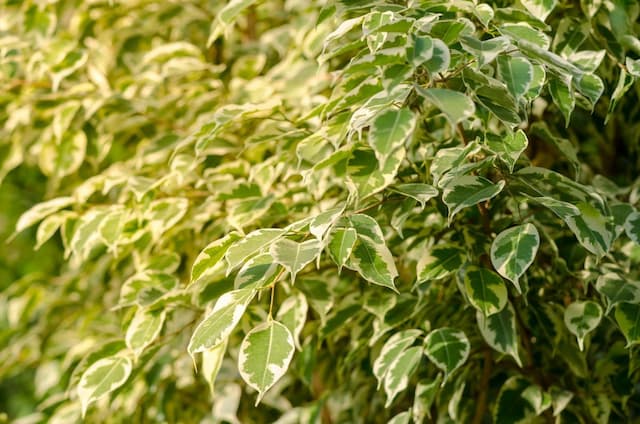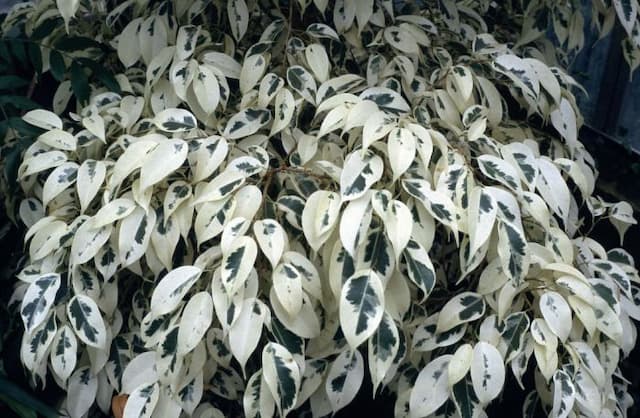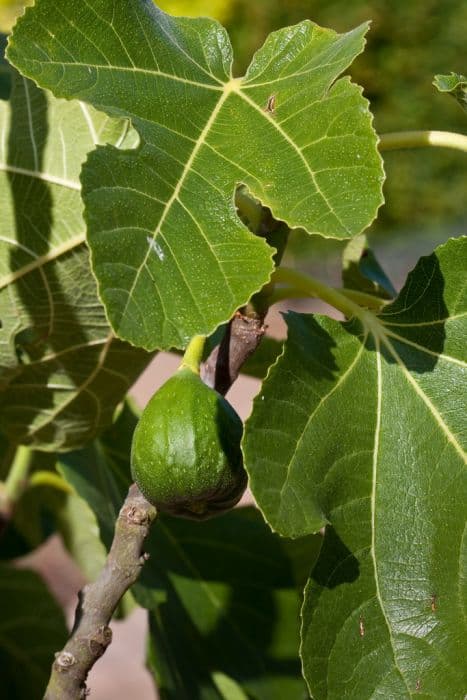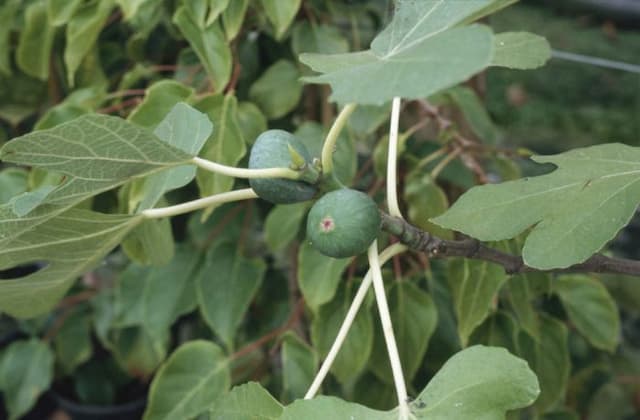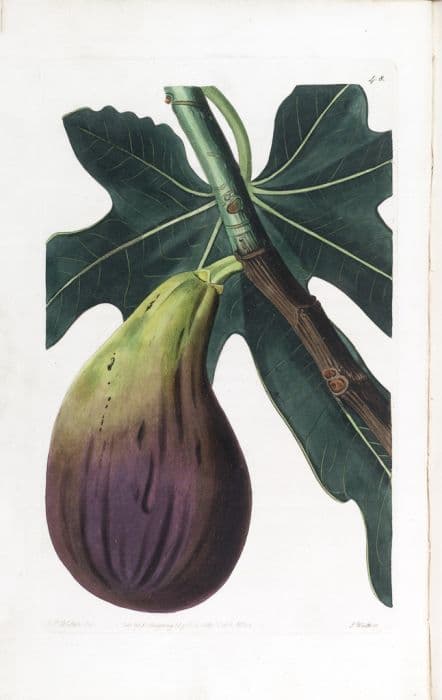Paper Mulberry Broussonetia papyrifera

ABOUT
Commonly known as paper mulberry, the plant has broad, ovate leaves that exhibit a variety of shapes, often lobed with a rough, hairy texture. The surface of the leaves is dark green and somewhat coarse, while the underside is lighter and may have a downy feel. As a deciduous tree, it sheds its leaves annually, revealing a gray to light brown bark that can become deeply fissured with age. The plant is dioecious, meaning that it has separate male and female individuals. In spring to early summer, the male trees produce long, drooping catkins, while the female trees bear rounded clusters of tiny flowers, which, if fertilized, develop into small, orange-reddish, globular fruits that are speckled and persistent through the season. These fruits are popular with a variety of bird species who enjoy their sweet, succulent character. The overall appearance of the paper mulberry is of a spreading nature, with branches that can point upwards or outwards, creating a rounded and somewhat irregular silhouette throughout the various seasons.
About this plant
 Names
NamesFamily
Moraceae.
Synonyms
Paper Mulberry, Tapacloth Tree, Dak, Halibun, Kalivon, Kozo, Tapʻa Cloth Tree.
Common names
Morus papyrifera, Papyrius papyrifera, Broussonetia papyrifer, Morus papyrifer.
 Toxicity
ToxicityTo humans
The plant commonly known as paper mulberry (Broussonetia papyrifera) is not generally considered toxic to humans. However, the sap of the plant can cause irritation to the skin in sensitive individuals. Ingesting parts of the plant is not commonly associated with poisoning in humans, and there is limited information on the symptoms of ingestion as it is not typically consumed.
To pets
The paper mulberry (Broussonetia papyrifera) is also not widely recognized as a toxic plant to pets. However, as with many plants, ingesting large amounts of foliage may cause mild gastrointestinal upset, such as vomiting or diarrhea in some pets due to the plant matter rather than specific toxins. Keep an eye on pets that like to chew on plants and contact your veterinarian if you observe unusual symptoms.
 Characteristics
CharacteristicsLife cycle
Perennials
Foliage type
Deciduous
Color of leaves
Green
Flower color
Varies
Height
30 feet (9.14 meters)
Spread
35 feet (10.67 meters)
Plant type
Tree
Hardiness zones
6
Native area
Asia
Benefits
 General Benefits
General Benefits- Material Production: Broussonetia papyrifera, commonly known as Paper Mulberry, has been used historically to make paper, particularly in East Asia, owing to its strong, fibrous bark which is suitable for papermaking.
- Textile Fiber: The inner bark provides fibers that can be used to create textiles, ropes, and other fabric-like materials.
- Fodder: The leaves and young shoots of the Paper Mulberry can serve as fodder for livestock in rural areas, providing an additional source of nutrition for animals.
- Cultural Significance: In various cultures, the Paper Mulberry has historical and cultural importance, often associated with traditional crafts and ceremonies.
- Edible Fruits: The fruit of the Paper Mulberry is edible and can be consumed, either raw or cooked, adding a dietary option for humans.
- Erosion Control: Its root system helps to stabilize the soil, reducing erosion particularly on slopes and disturbed ground.
- Shade and Ornamental Use: Paper Mulberry can be used as a shade tree in gardens and parks and has ornamental value due to its attractive foliage and form.
- Agroforestry: Paper Mulberry can be incorporated into agroforestry systems, providing multiple benefits such as shade for other crops, material outputs, and soil enrichment.
 Medical Properties
Medical Properties- Anti-inflammatory: Broussonetia papyrifera has been used to reduce inflammation in traditional medicine.
- Antioxidant: The plant contains compounds that exhibit antioxidant properties.
- Anti-bacterial: Extracts from this plant have shown antibacterial effects against certain strains of bacteria.
- Hepatoprotective: It may offer some protection to the liver from toxic substances.
- Analgesic: The plant has been used to alleviate pain in some traditional medicine systems.
- Wound healing: Traditional use includes the application of parts of the plant to promote wound healing.
 Air-purifying Qualities
Air-purifying QualitiesThis plant is not specifically known for air purifying qualities.
 Other Uses
Other Uses- Broussonetia papyrifera, commonly known as paper mulberry, can be used in landscaping as an ornamental tree due to its unique foliage and bark texture.
- The inner bark of paper mulberry can be used in fibre arts for creating textured fabrics and papers with a distinctive appearance.
- The fruit of paper mulberry can be employed as a natural dye for fabrics, yielding hues that range from soft yellows to deep oranges.
- In some cultures, the leaves of paper mulberry are used as a fodder for livestock, especially silkworms, which are the producers of silk.
- The wood of paper mulberry is soft and can be used for making lightweight objects, such as drums and other musical instruments, which benefit from its resonant qualities.
- Due to its rapid growth and spreading habit, paper mulberry is used for erosion control in some regions, preventing soil degradation and loss.
- The fallen leaves of paper mulberry can provide a rich source of nutrients as a mulch for gardens and agricultural lands.
- In traditional crafts, paper mulberry bark fibers are woven into mats, baskets, and other utensils in various Pacific cultures.
- Paper mulberry thickets can serve as a habitat for wildlife, providing shelter and food for birds and insects.
- In the creation of kites, the lightweight and strong fibers of paper mulberry wood and bark are ideal materials for frames and paper coverings.
Interesting Facts
 Feng Shui
Feng ShuiThe Paper Mulberry is not used in Feng Shui practice.
 Zodiac Sign Compitability
Zodiac Sign CompitabilityThe Paper Mulberry is not used in astrology practice.
 Plant Symbolism
Plant Symbolism- Cultural Heritage: The Paper Mulberry is deeply intertwined with East Asian cultures, notably in China, Korea, and Japan, where it has been cultivated for centuries for making paper. It symbolizes the rich traditions and history of papermaking in these societies.
- Knowledge and Wisdom: As a source of paper, a primary medium for the spread of knowledge and ideas through writing, the Paper Mulberry is often associated with wisdom, learning, and the communication of thoughts.
- Resilience and Adaptability: The Paper Mulberry is a hardy plant able to grow in various climates and conditions, symbolizing the ability to adapt and thrive in diverse environments.
- Connection and Communication: Given its role in paper production, the Paper Mulberry represents connection between people through letters and written communication, underscoring the importance of sharing information.
 Water
WaterThe Paper Mulberry should be watered deeply, allowing water to penetrate the soil to the depth of the roots, generally about once a week during the growing season. It's important to ensure that the soil is moist but not waterlogged. Approximately 1 to 1.5 gallons of water should suffice for a young tree, increasing as it matures and depending on the tree's size, location, and weather conditions. In the winter months, reduce watering frequency as the plant enters dormancy.
 Light
LightThe Paper Mulberry thrives in full sunlight to partial shade, so it’s best to plant it in a spot where it can receive at least six hours of direct sunlight each day. However, it can also tolerate a bit of shade, making it adaptable to different lighting conditions.
 Temperature
TemperatureThe Paper Mulberry can endure a wide range of temperatures, from as low as 5°F to as high as over 100°F. The ideal temperature range for optimal growth is between 60°F and 85°F. It is quite hardy and can withstand brief periods of cold weather, but extended freezes may damage the plant.
 Pruning
PruningPruning Paper Mulberry is necessary to maintain its shape, remove dead or diseased wood, and encourage healthy growth. The best time to prune is in the late winter or early spring before new growth starts. Pruning should be done yearly to improve air circulation and reduce the risk of disease.
 Cleaning
CleaningAs needed
 Soil
SoilPaper Mulberry thrives in a well-draining soil mixture with a pH range of 5.0 to 7.5. A mix of loam, sand, and peat in equal parts would be ideal, ensuring adequate drainage and aeration.
 Repotting
RepottingPaper Mulberry should generally be repotted every 2 to 3 years to prevent root bounding and ensure continued growth.
 Humidity & Misting
Humidity & MistingPaper Mulberry fares well in moderate humidity levels, typical of most indoor environments, without the need for special humidity adjustments.
 Suitable locations
Suitable locationsIndoor
Place Paper Mulberry in bright indirect light and room temperature.
Outdoor
Plant Paper Mulberry in full sun to partial shade in well-drained soil.
Hardiness zone
6-10 USDA
 Life cycle
Life cycleBroussonetia papyrifera, commonly known as Paper Mulberry, begins its life cycle as a seed that germinates in spring, given suitable warmth and moisture. The seedling grows rapidly into a juvenile plant, establishing a robust root system and a straight stem with large, lobed leaves. As an adaptable pioneer species, Paper Mulberry can mature quickly and start to produce flowers within a few years; male and female flowers are borne on separate trees (dioecious). After pollination, typically by wind, female trees produce small, round fruits that mature over the summer and early autumn, turning orange-red when ripe. The fruits are eaten by birds and other wildlife, which disperse the seeds and enable the cycle to continue. Once mature, Paper Mulberry can live for several decades, continuing to reproduce annually and sometimes forming dense thickets or stands as it spreads.
 Propogation
PropogationPropogation time
Spring-Early Summer
Propogation: The most popular method of propagation for Paper Mulberry, Broussonetia papyrifera, is through seed sowing. The best time to sow the seeds is in spring after the last frost when the soil has warmed up. The seeds need to be collected from ripe fruits, cleaned, and then sown in a well-draining soil mixture at a shallow depth, approximately 1/4 inch (about 6 millimeters) deep. It is essential to keep the soil consistently moist but not waterlogged. Germination can be enhanced if the seeds are stratified for one to two months at 41 degrees Fahrenheit (5 degrees Celsius) before sowing. Seedlings usually appear within a few weeks and can be transplanted once they are large enough to handle.


